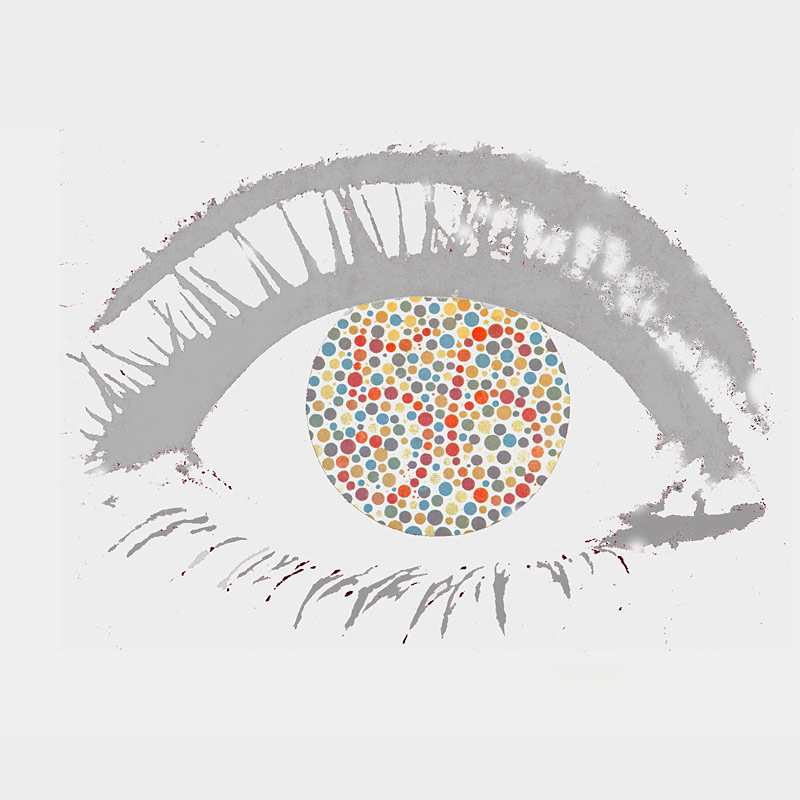Goethe already dealt with the topic in detail and even created illustrations that are supposed to show how so-called "color-blind people" - today we use the term color vision deficiency or impaired color vision - see colors. In the second half of the 19th century, in the course of the increased volume of traffic during industrialization, there were some serious rail and ship accidents, the cause of which was identified as the confusion of the colored signal lights. This led to a veritable boom in research into color blindness and the development of methods to detect it, which show an astonishing variety.
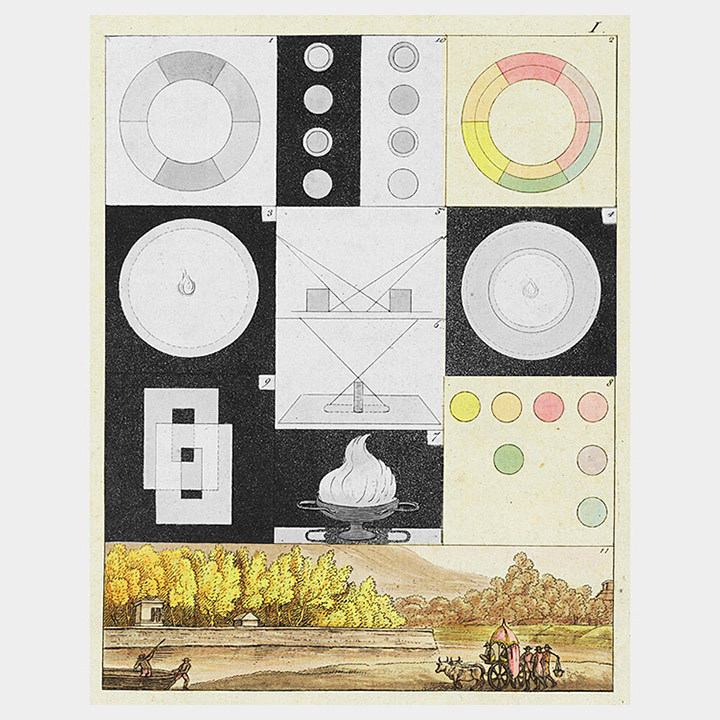
Goethe: Farbenlehre, 1810
(top): Color wheel for people with normal color-vision(outward)
Color wheel for color blind people (inward)
(middle): Colors which look alike for color blind people
(bottom): This is how color-blind people see the world according to Goethe

Jacob Stilling’s title page and diagnosis plate created by oil color printing, 1877
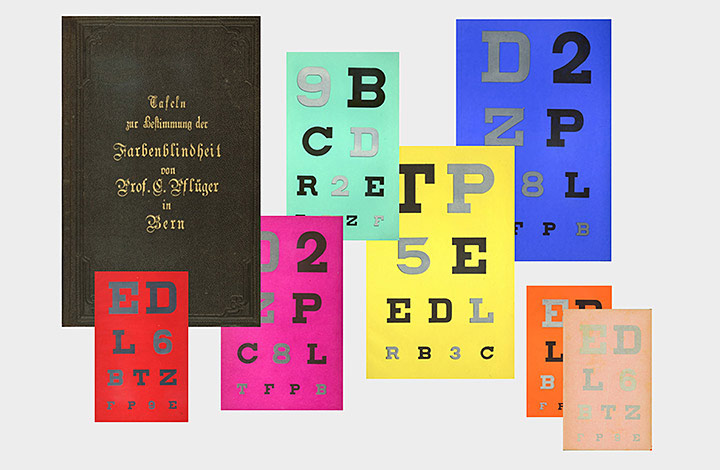
E. Pflüger's color plates for the determination of color blindness by means of pile contrast, 1880
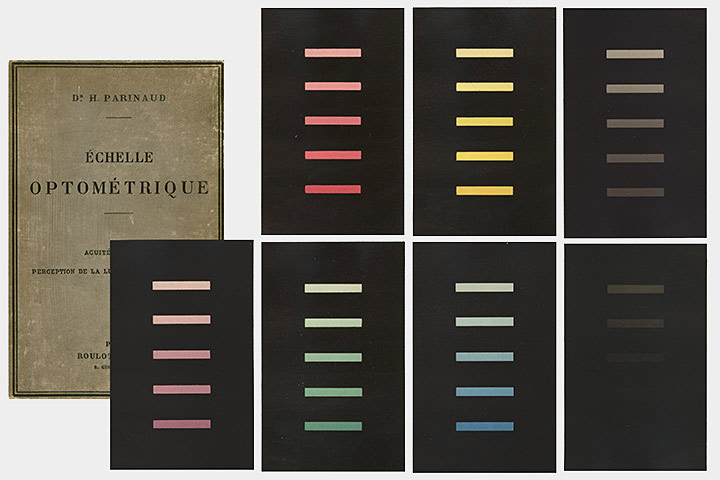
H. Parinaud's diagnostic plates, 1888

With the colored pencil test according to Hans Adler from 1891, a special set of colored pencils (Lustre Pastels by Hardtmuth) was required for the test subject, whose test results were automatically fixed with it.
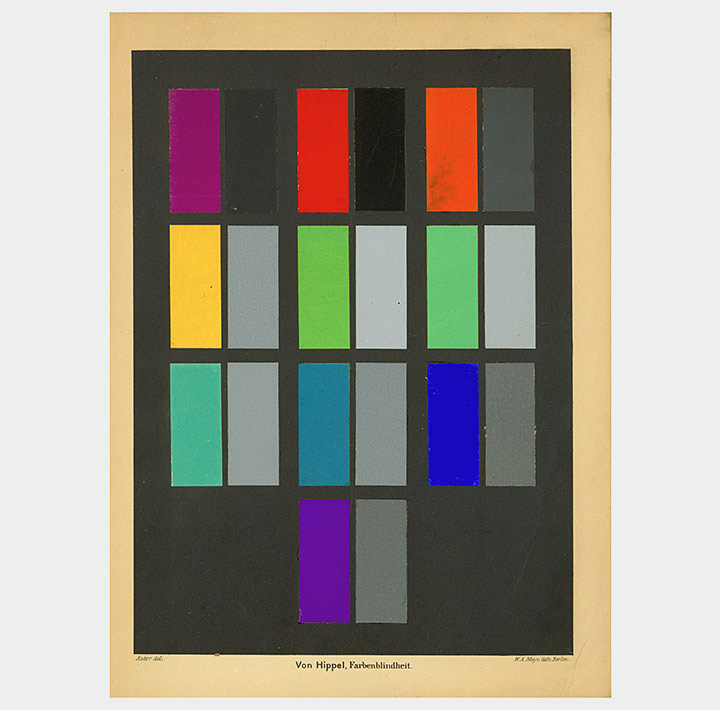
A. v. Hippel's demonstration plate for total color blindness with paint samples, 1894
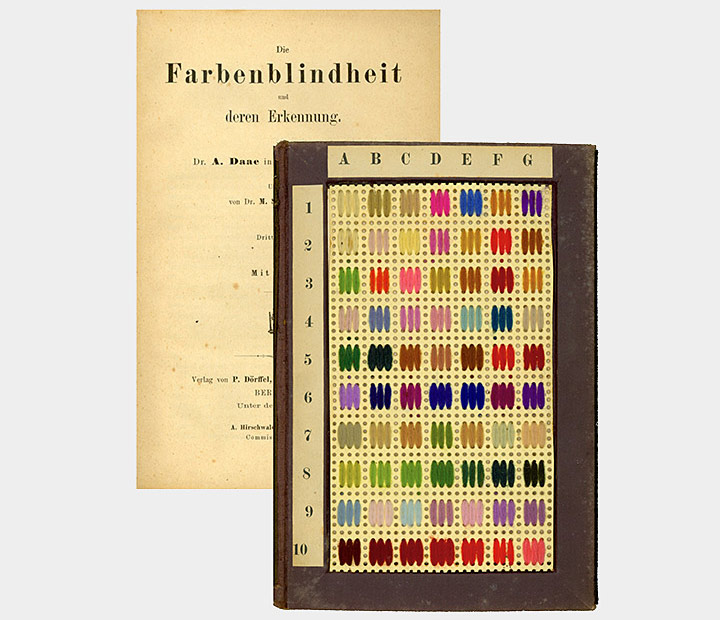
Anders Daae's determination of color blindness using wool color swatches, 1898
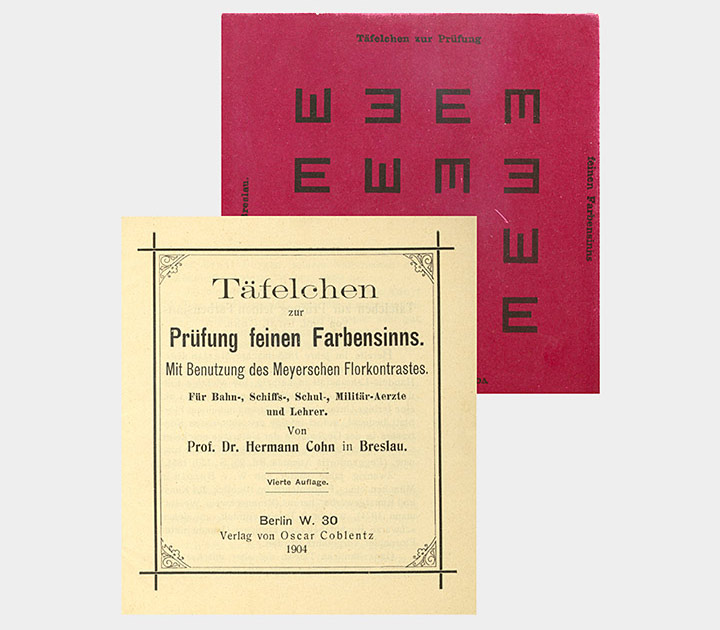
H. Cohn's "Täfelchen" for the determination of color blindness by means of pile contrast, 1904
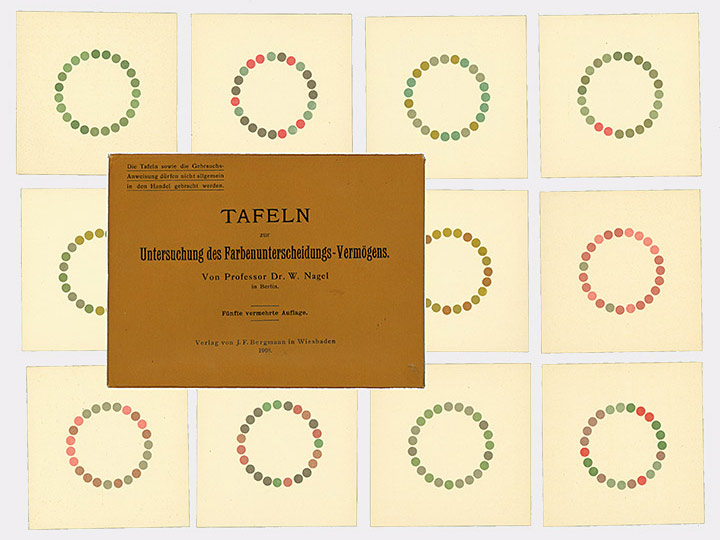
W. Nagel's plates for the investigation of the ability to distinguish colors, 1908
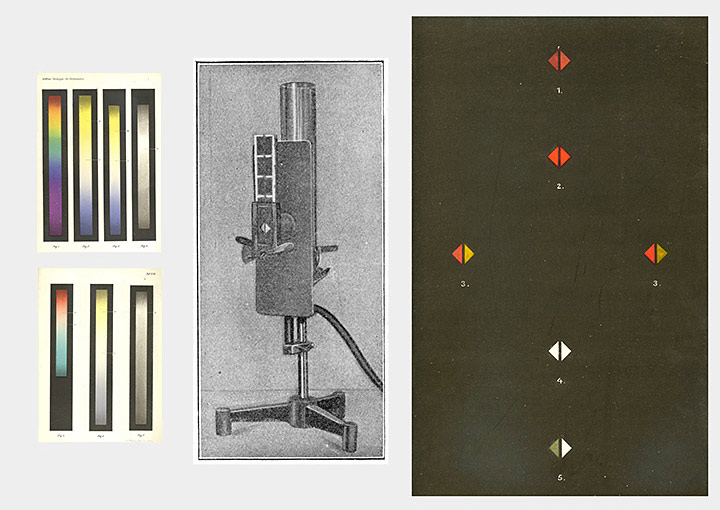
Hans Köllner's color equation apparatus with color adjustment field, 1912
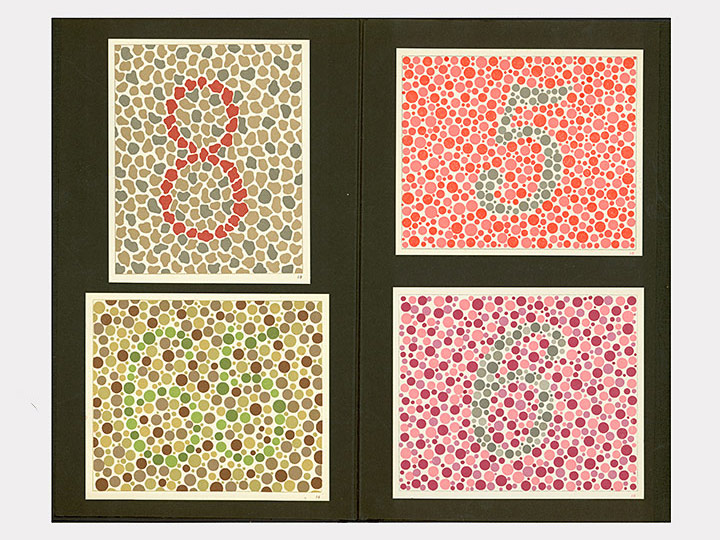
Four plates for determining color blindness by Hertel, 1939

Richard Schmidt’s & Adolf Koch's comparison of normal color vision and red-green blindness, 1943


